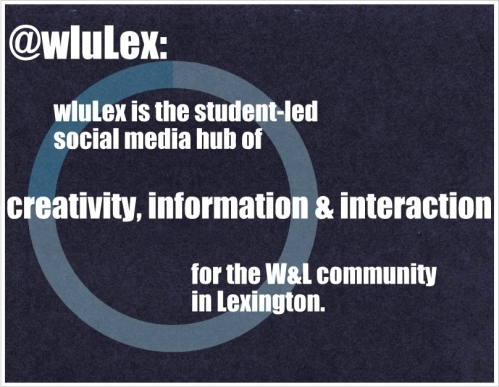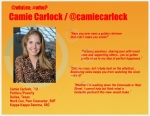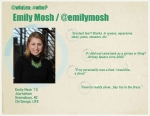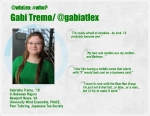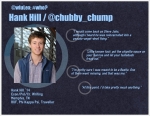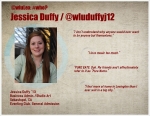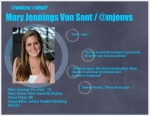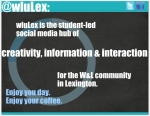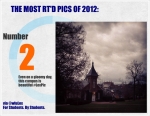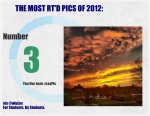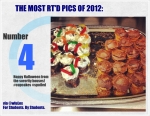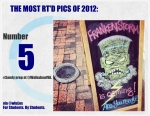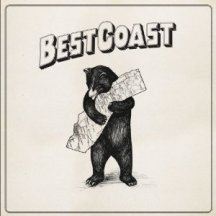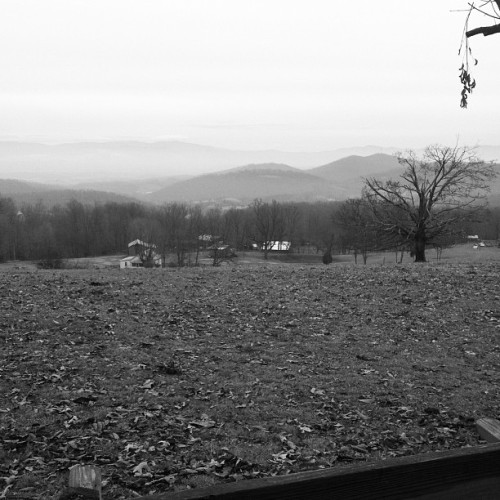As part of Washington and Lee’s interdisciplinary seminar, “Questioning the Good Life,” sociologist and author (here’s his book, Against Happiness: In Praise of Melancholy) Eric Wilson gave a lecture and discussion on the importance of melancholy (W&L press release here). I was lucky enough to manage @wluNews‘ twitter account for the event. My arm wasn’t twisted too much–who doesn’t want to unlock the secrets to happiness?
In a very small nutshell, Wilson argues that periods of melancholy, defined below, are necessary to happiness as melancholy allows us to see the world in new, infinite ways. Ultimately, I thought he did a better job of articulating the merits of novel experiences in life than he did in defining happiness. I guess they say variety is the spice of life.
During the Q&A after the lecture, I asked him if the familiar, non-novel parts of our lives have value. After all, are we honestly supposed to live our entire lives in a sea of uncertainty to find happiness? To which he replied: there must be familiarity to come back to-or else the unknown has no meaning. There must be a polarization. —More thoughts on his response to follow in the comments section.
Here are the associated tweets (chronologically) as well as some stuff that didn’t make the Twitterwebs.
 Here, Wilson made two important distinctions:
Here, Wilson made two important distinctions:
Melancholy vs. Depression: Melancholy is the novel, unique, random feelings of sadness we all feel. Depression is a state at which the feelings of sadness are no longer novel or unique–because they’re ever present.
“American” Happiness vs. Joy: Roughly speaking, “American” happiness is a feeling of contentment, of having what you want. Joy, on the other hand is the feeling one gets when he or she becomes so overwhelmed with emotion that crying is only a hair away.

Noted that he suffers from depression as well has bipolar disorder. He urged medical treatment in dangerous situations, but seemed to hope that people don’t confuse “depression” and “melancholy.”

He recalled a difficult period in his life (starting college) and the terrible dread he felt; he had left home to play football for Army. It took the pain and sadness following his arrival to make him realize a huge change was needed.

Here, Wilson started pulling in some of philosophy and literature’s greatest hits: Pseudo-Aristotle, Sarte, Blake, James, Keats, Tolstoy, and Dickinson. I’ve simply added a few relevant quotes with tweets below; when paired with the tweets, Wilson’s general views are well-outlined.

Blake: Without contraries is no progression. Attraction and repulsion, reason and energy, love and hate, are necessary to human existence.

Blake: Art can never exist without naked beauty displayed.

James: To study the abnormal is the best way of understanding the normal.

Keats: Nothing ever becomes real till it is experienced.

Dickinson: My business is circumference. Here, Wilson quoted Dickinson who viewed things from every angle. This multi-angled view of the world may go on toward infinity.

Tolstoy: It is amazing how complete is the delusion that beauty is goodness.

Blake: To see the world in a grain of sand, and to see heaven in a wild flower, hold infinity in the palm of your hands, and eternity in an hour.

So yeah, I’m pumped for the next chat. Please feel free to comment or start a discussion below!



